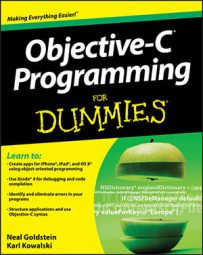Object-oriented programming languages enable you to declare classes, create derived classes (subclass), and send messages to the objects instantiated from a class. This is the essence of object-oriented programming and part of the object-oriented extensions that Objective-C adds to C. To ensure that everything operates smoothly, compiler directives are available that enable you to inform the compiler of your classes by using @class and #import.
Interface
#import "Superclass.h"
@interface ClassName : Superclass {
instance variable declarations;
}
method declarations
@property(attributes) instance variable declaration;
–d
Implementation
#import "ClassName.h" @implementation ClassName @synthesize instance variable ; method definitions –d
Message Syntax
[receiver message]
#import
#import "filename.h"
Guarantees that a header file will be included only once.
@class
@class ClassName;
Clues the compiler into user defined types.

